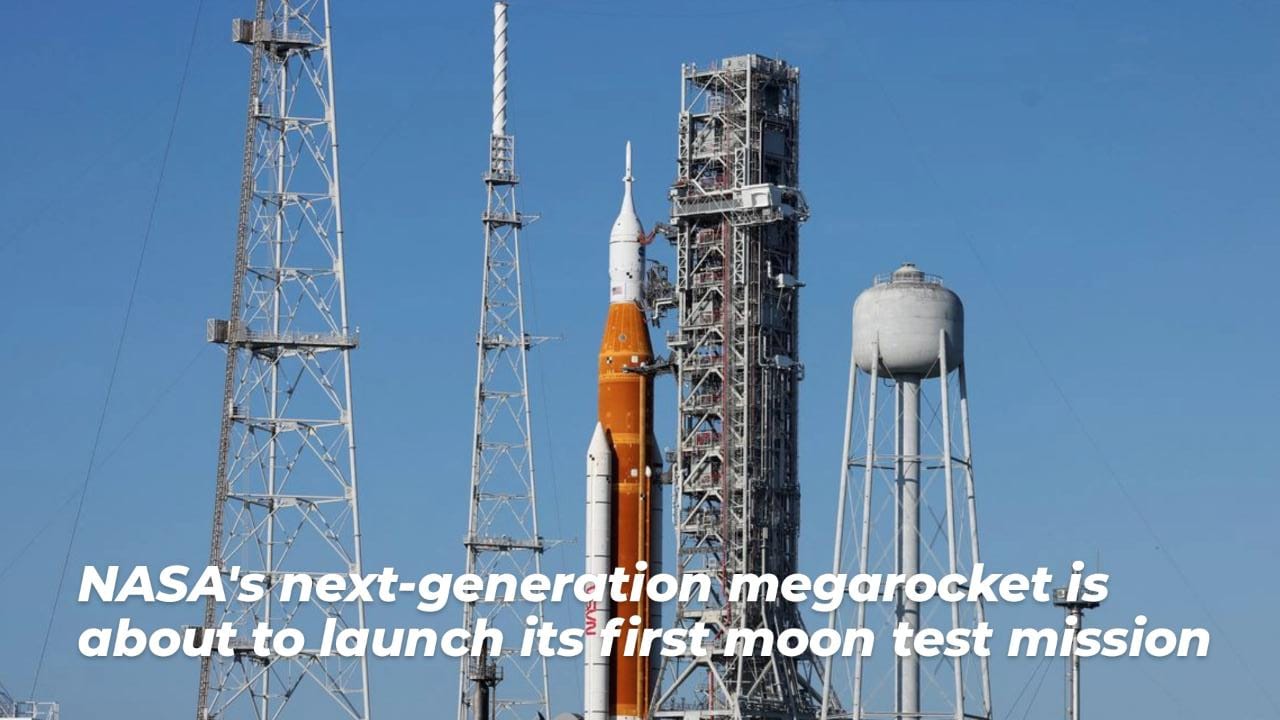
The first mission of NASA’s Artemis programme, the replacement for Apollo, was scheduled to launch on Monday with a massive next-generation rocketship on an unmanned, six-week test voyage around the moon and back.
During a two-hour launch window beginning at 8:33 a.m. EDT, the 32-story-tall Space Launch System (SLS) rocket and its Orion crew capsule were scheduled to lift off from the Kennedy Space Center in Cape Canaveral, Florida (1233 GMT).
Before NASA decides the SLS-Orion is trustworthy enough to transport astronauts, the mission Artemis I, the SLS-inaugural Orion’s flight, is meant to put the 5.75 million pound craft through its paces in a demanding demonstration flight and push its design boundaries.
The SLS is the largest new vertical launch system the U.S. space agency has built since the Saturn V flown during the Apollo moon programme of the 1960s and 1970s. It is marketed as the most powerful, complex rocket in the world.
After weeks of last-minute preparations and ground tests, the spacecraft was gently towed to historic Launch Pad 39B earlier this month. NASA officials completed their study of flight readiness last week and declared that all systems were ‘go for launch.’
NASA officials mentioned last week that one potential problem that could prevent Monday’s launch was any indication that a recently repaired hydrogen line fitting had failed to hold during rocket fueling.
NASA has designated September 2 and September 5 as backup launch dates in case the countdown clock is stopped for any reason.
The rocket’s four main R-25 engines and its twin solid rocket boosters should ignite at the end of Monday’s countdown, producing 8.8 million pounds of thrust—about 15% more thrust than the Saturn V produced—and sending the spacecraft streaking into the sky, barring any last-minute technical issues or unfavourable weather.
Orion will be propelled into lunar orbit by the rocket’s upper stage about 90 minutes after liftoff, beginning a 42-day journey that will send it to within 60 miles of the moon’s surface before it travels 40,000 miles (64,374 km) beyond the moon and back to Earth. On October 10, the capsule is anticipated to splash down in the Pacific.
Orion will carry a simulated crew of three, consisting of one male and two female mannequins, even though there won’t be any actual humans on board. These mannequins will be outfitted with sensors to measure radiation levels and other stresses that actual astronauts would encounter.
When Orion returns to Earth from lunar orbit, it will do so at a speed of 24,500 miles (39,429 km) per hour, or 32 times the speed of sound. This is much faster than the more typical re-entries of astronaut capsules returning from low-Earth orbit. A key goal of the mission is to test the durability of Orion’s heat shield during re-entry.
Lead flight director Rick LaBrode stated that establishing the heat shield’s capacity to survive re-entry friction, which is anticipated to boost temperatures outside the capsule to about 5,000 degrees Fahrenheit, is ‘our biggest objective that we have to do’ (2,760 Celsius). ‘That will maintain the capsule’s integrity and protect the astronauts.’

Post Your Comments